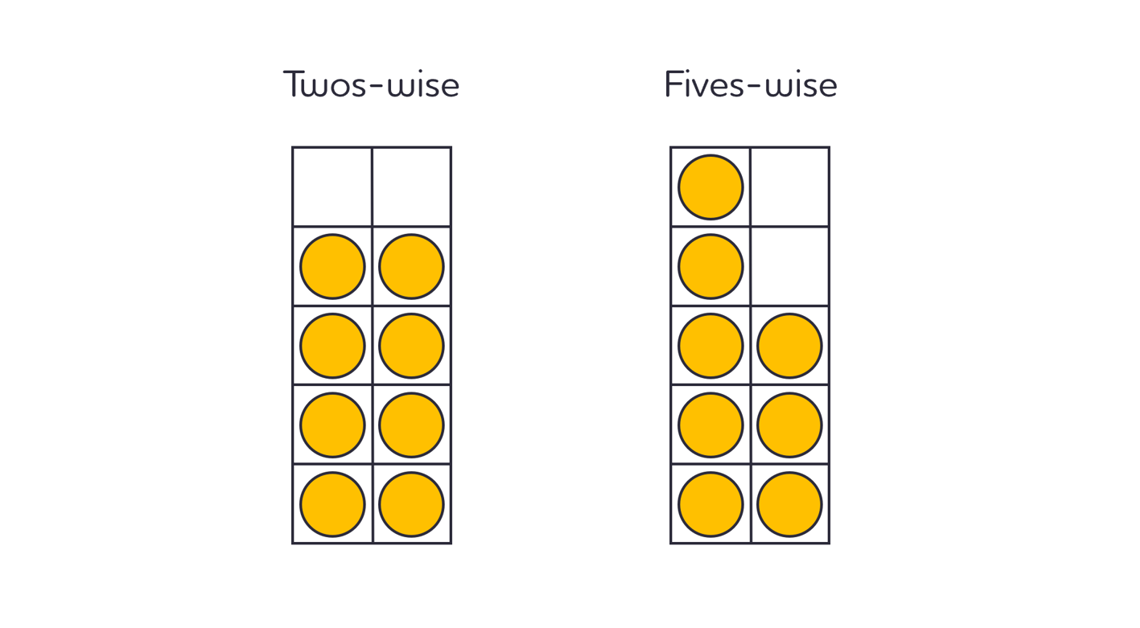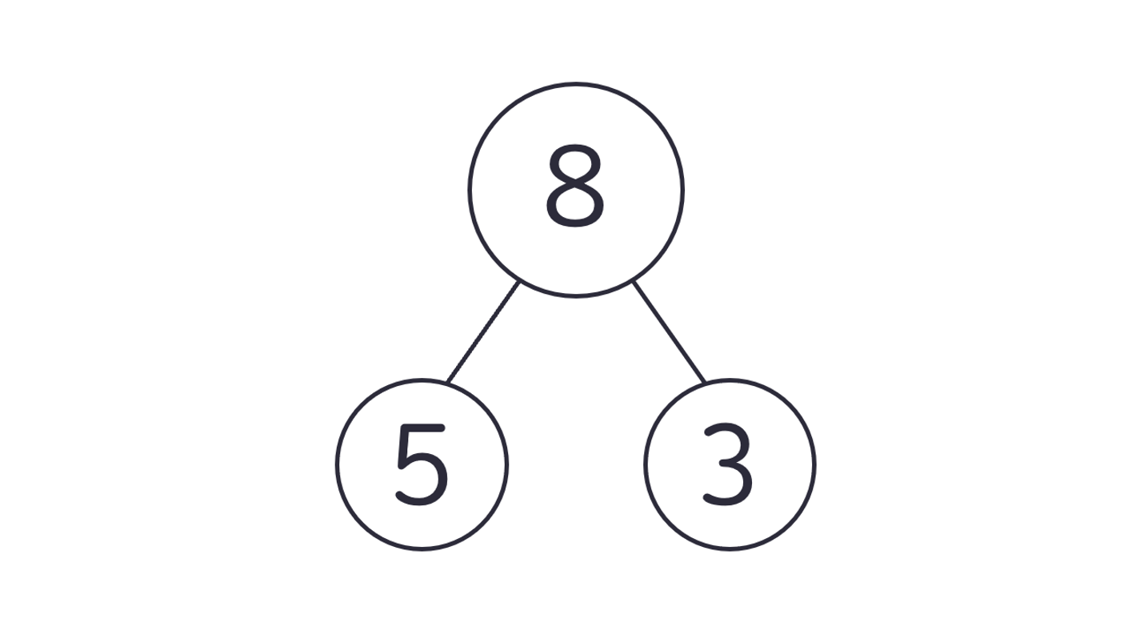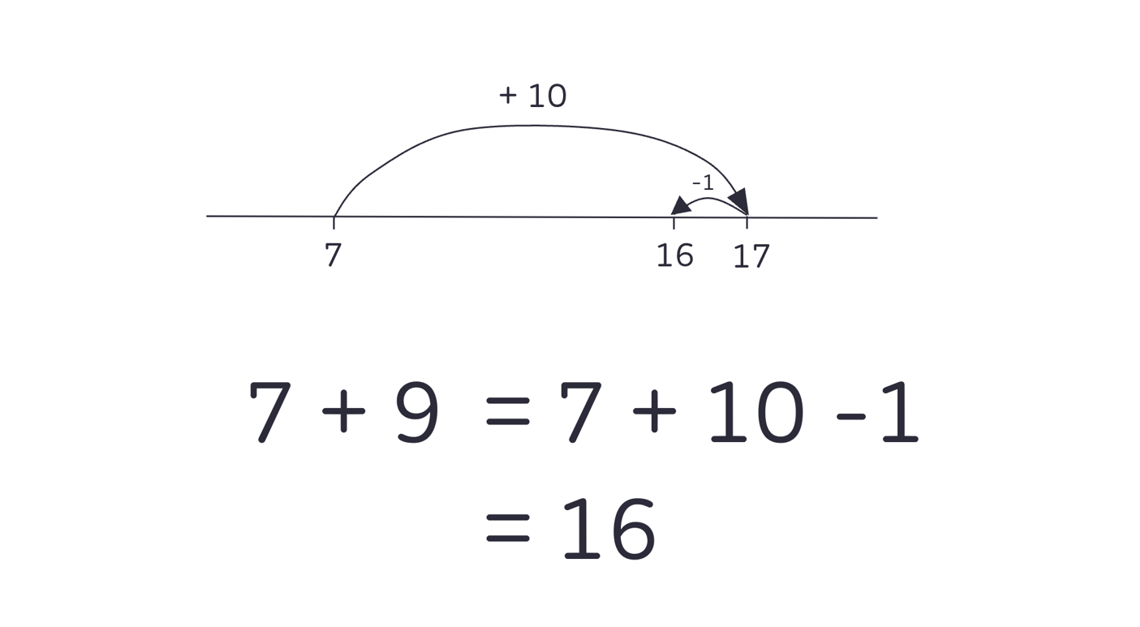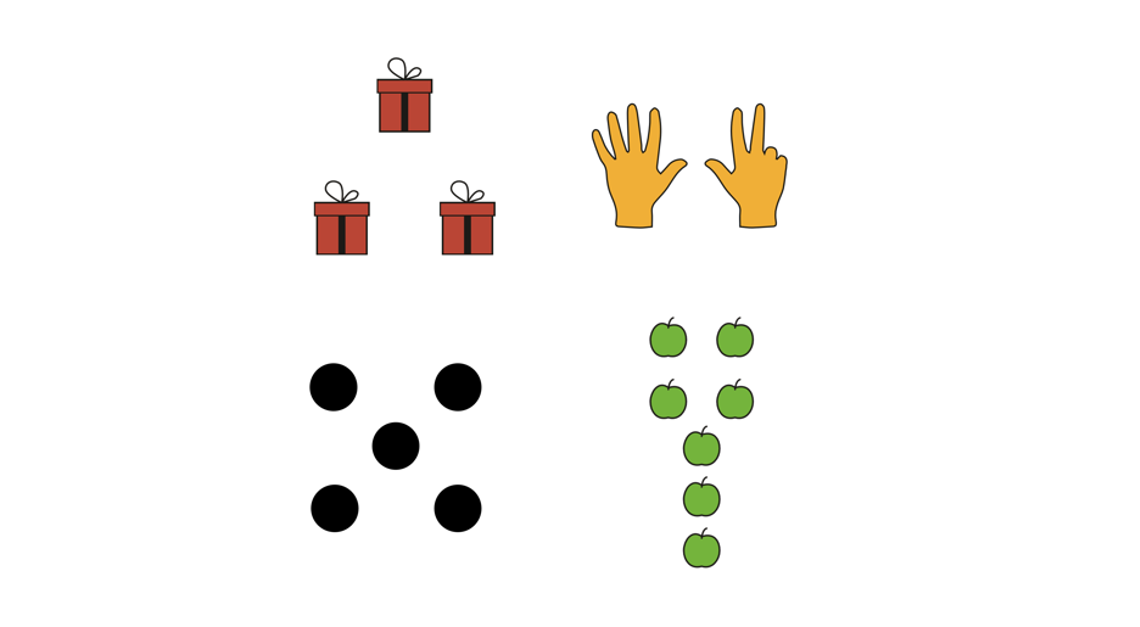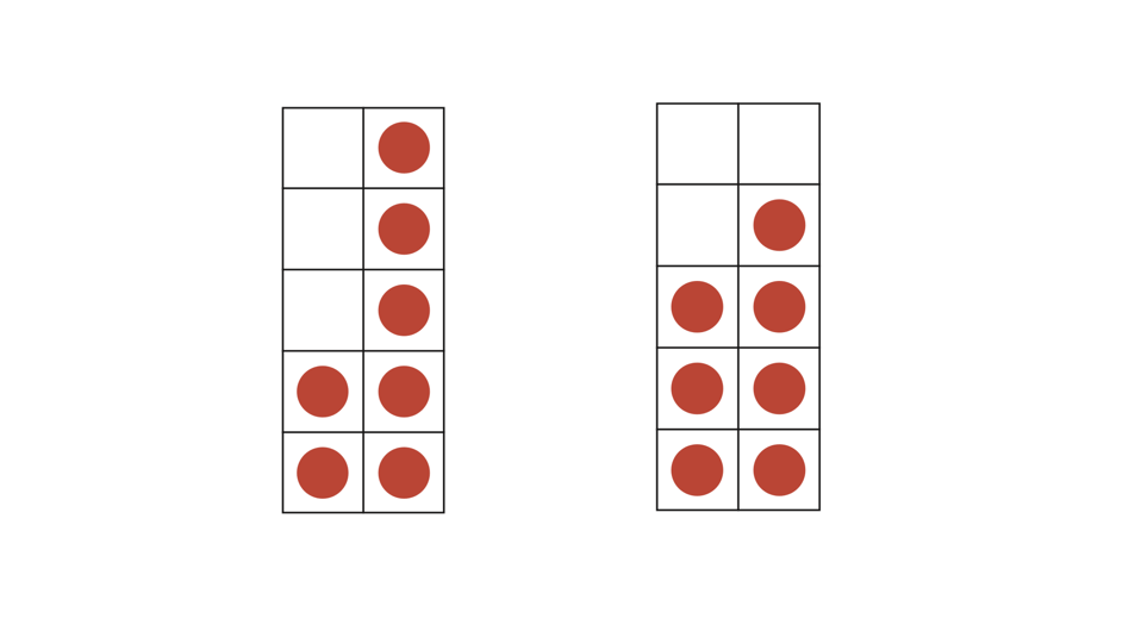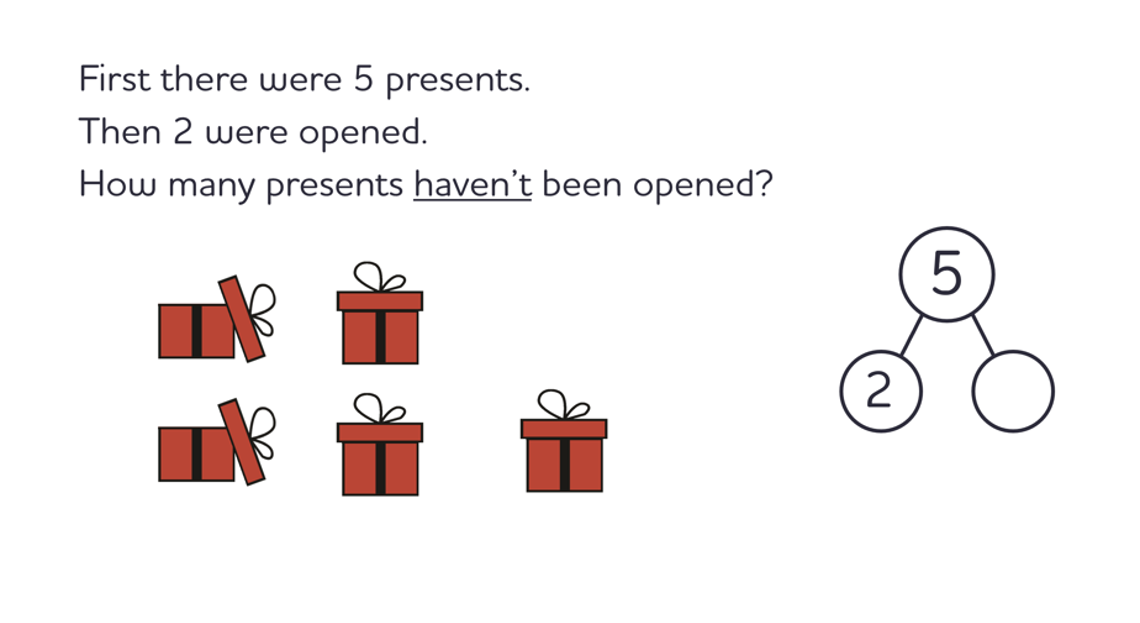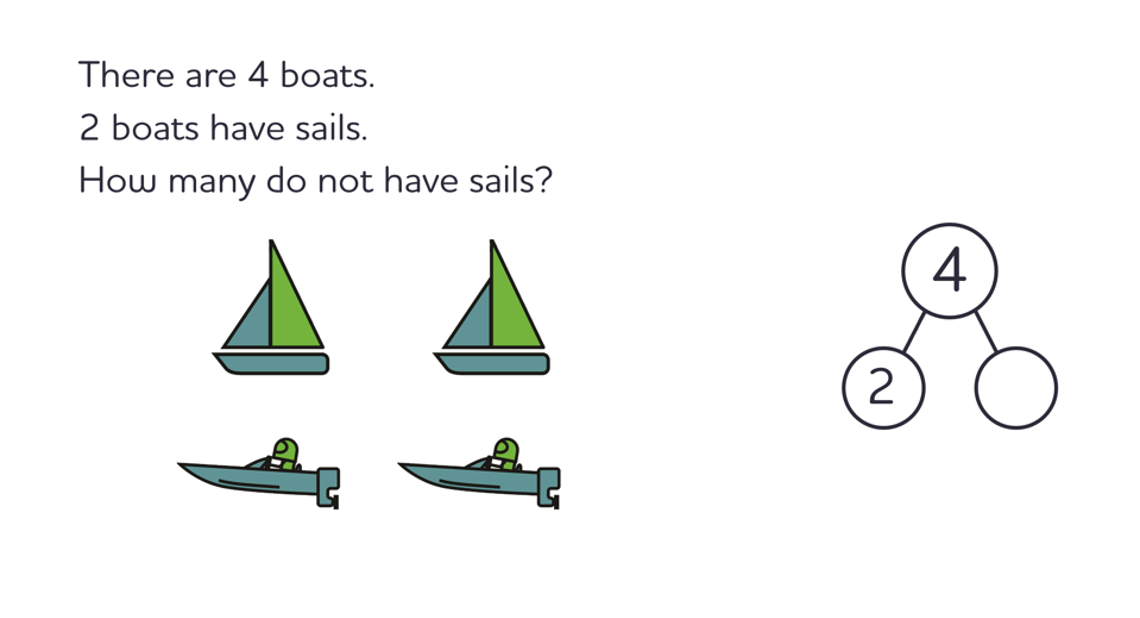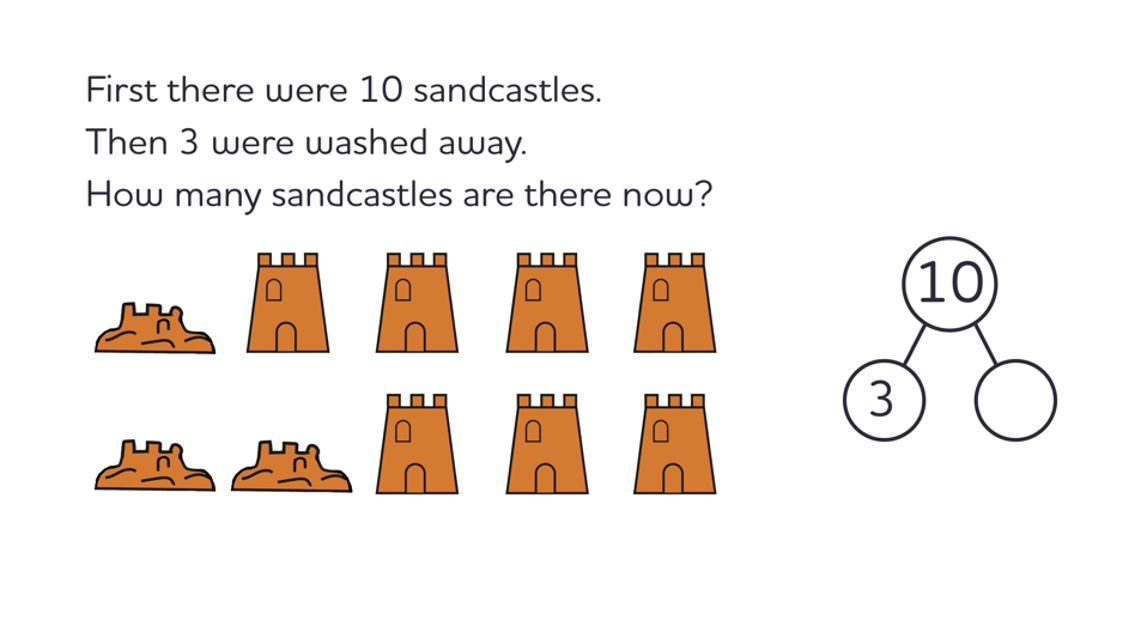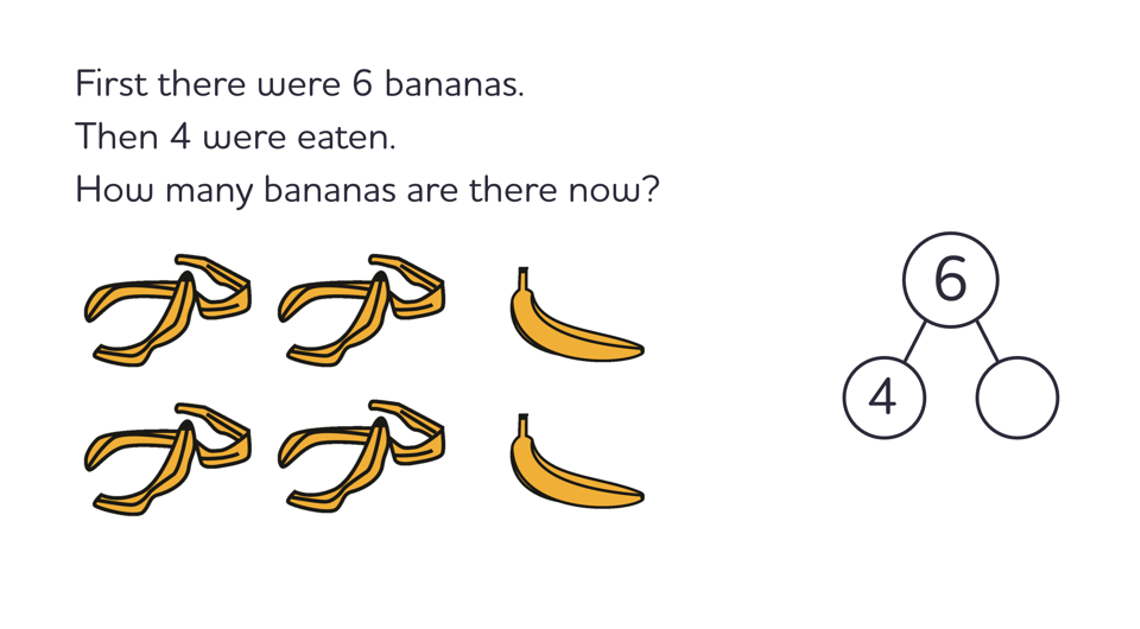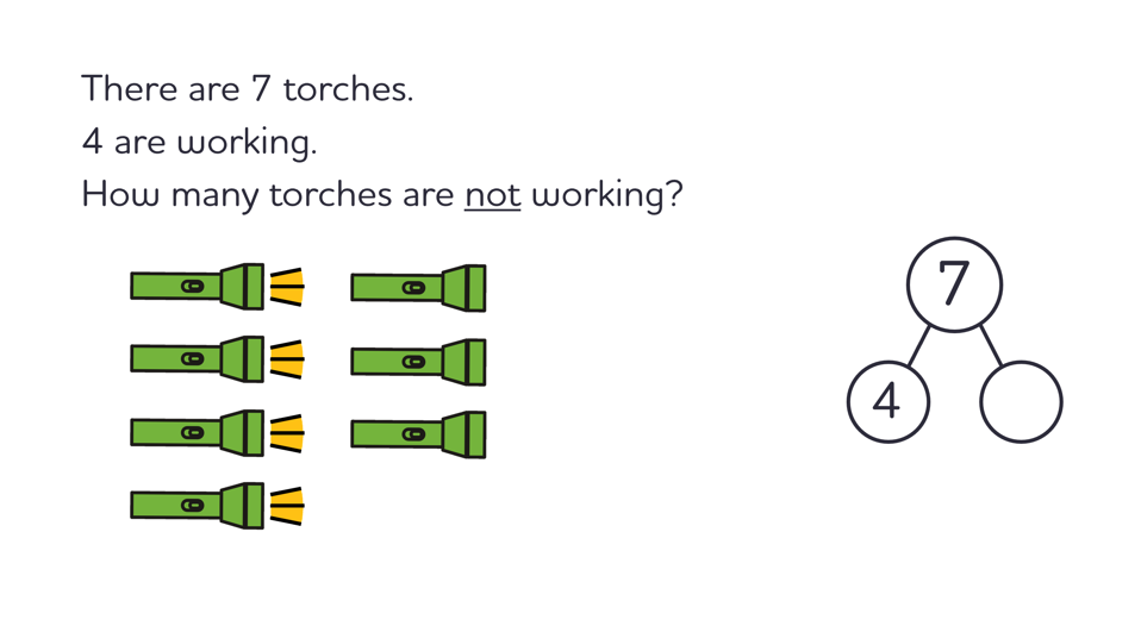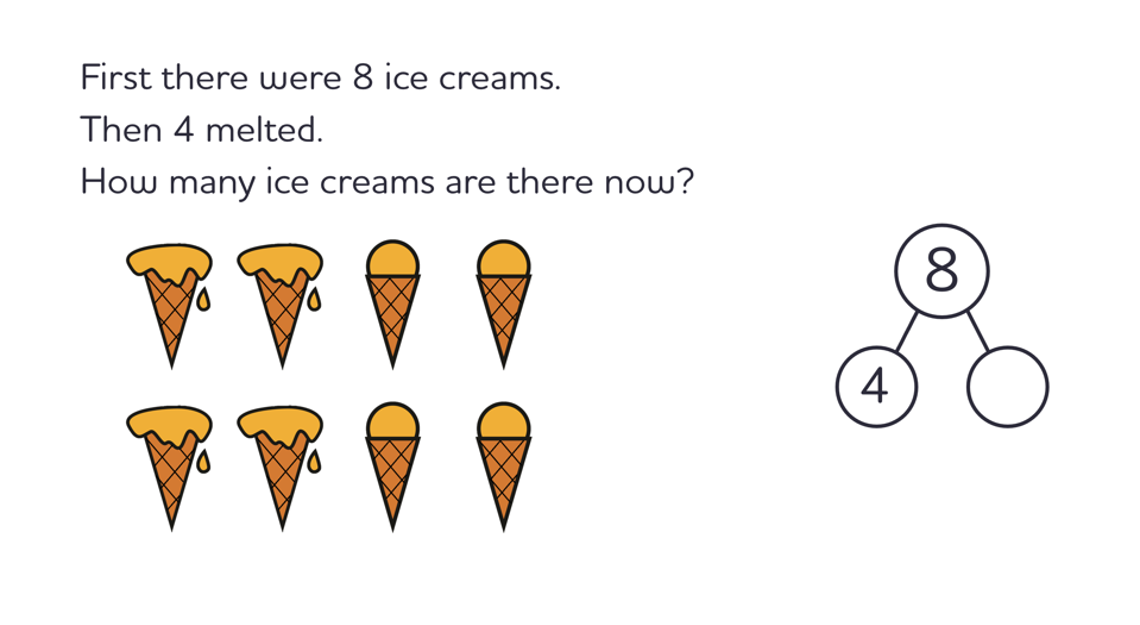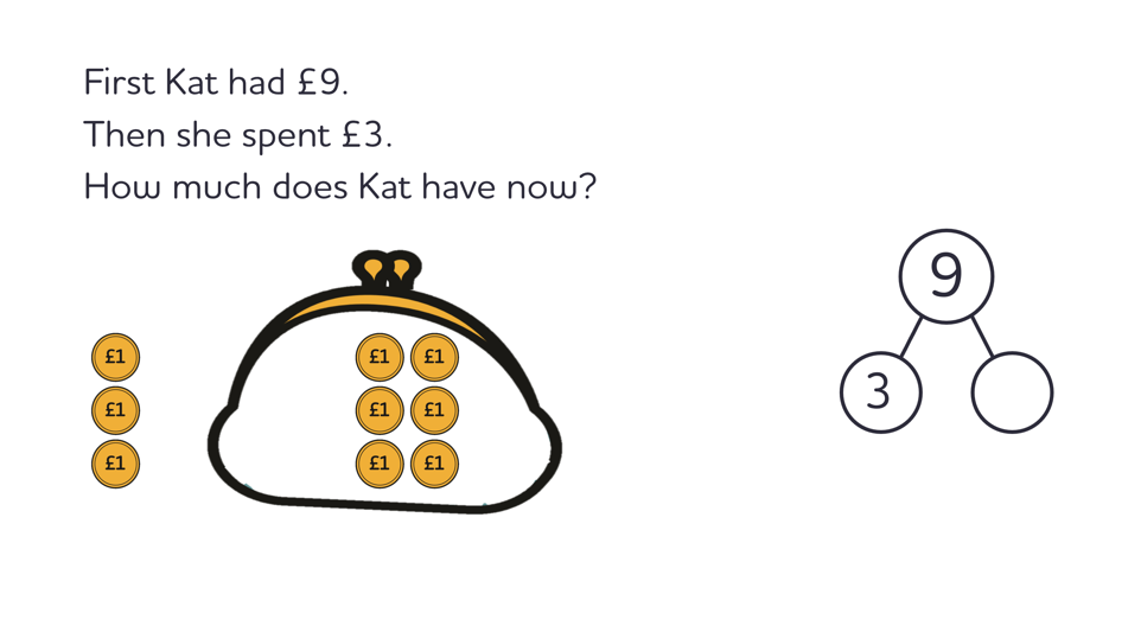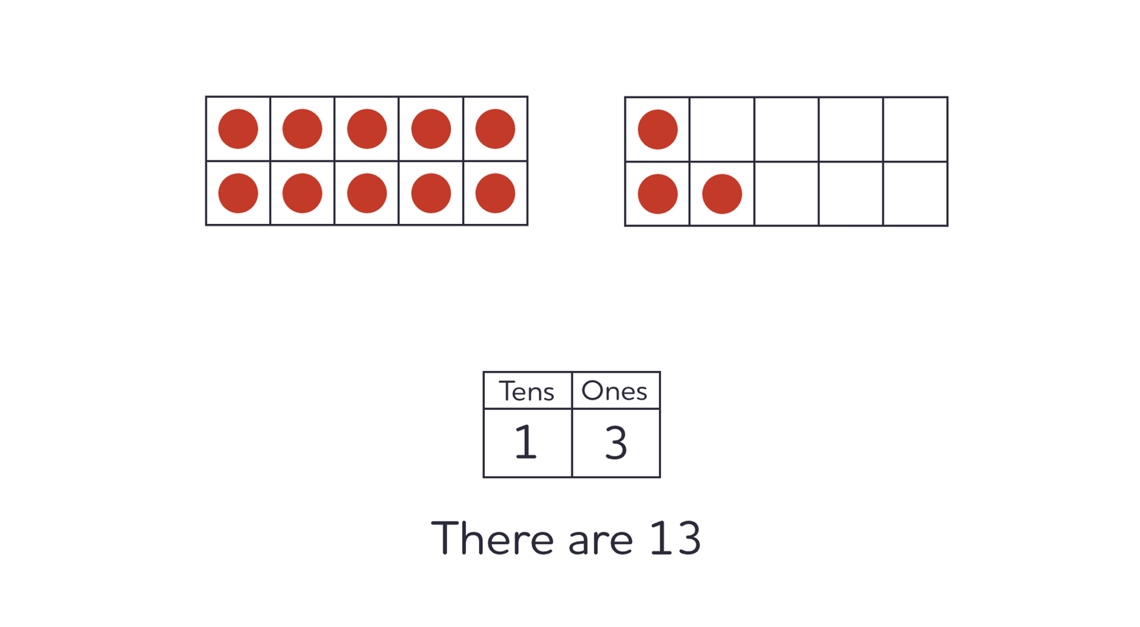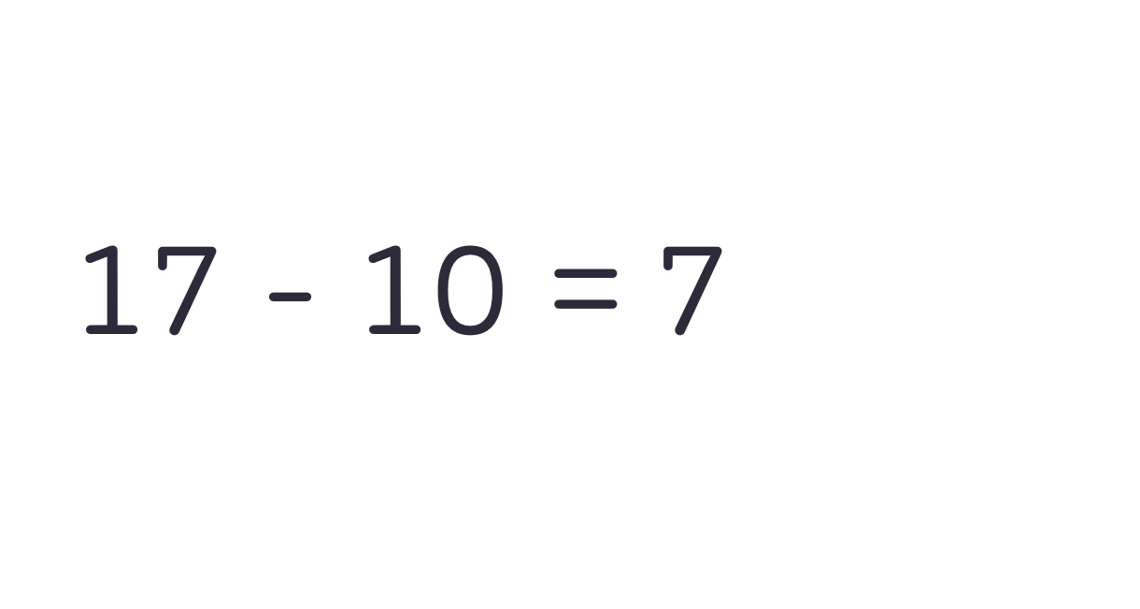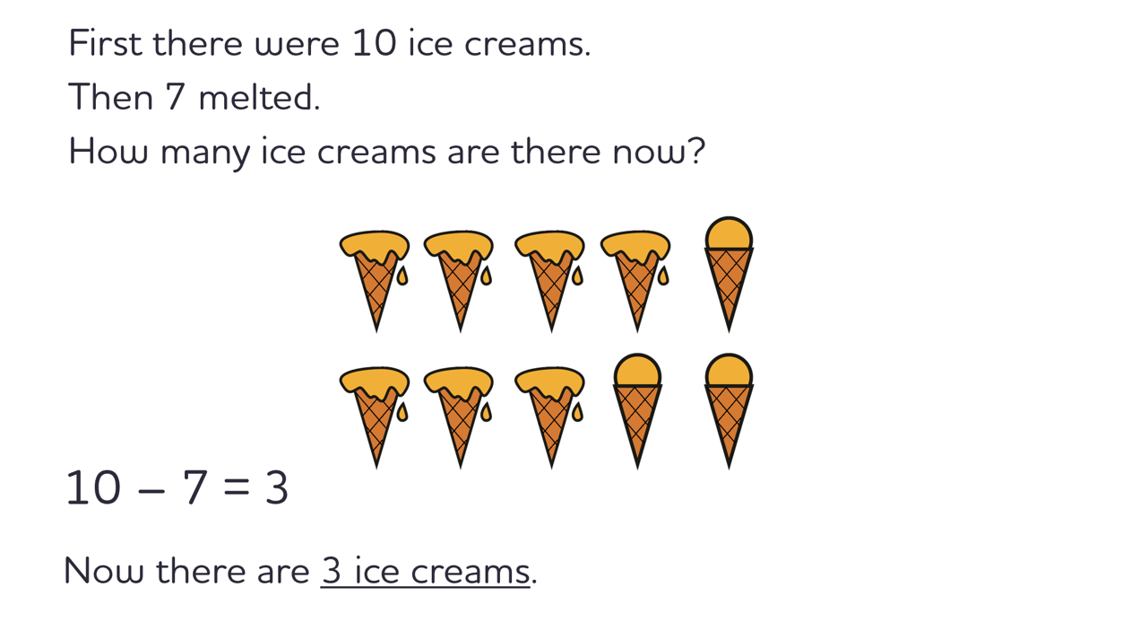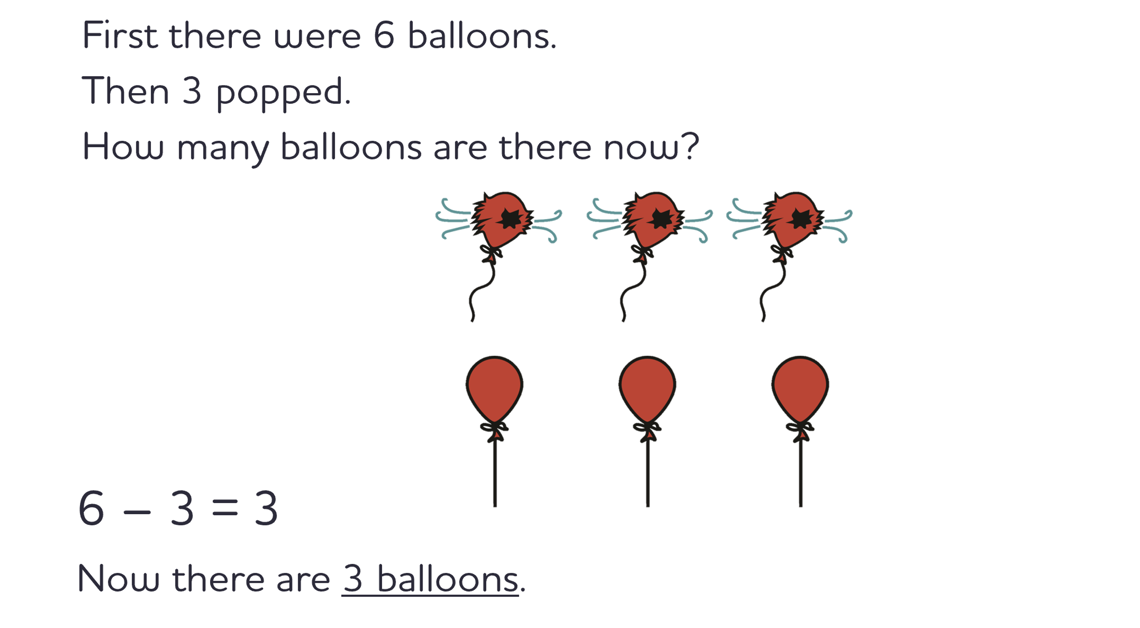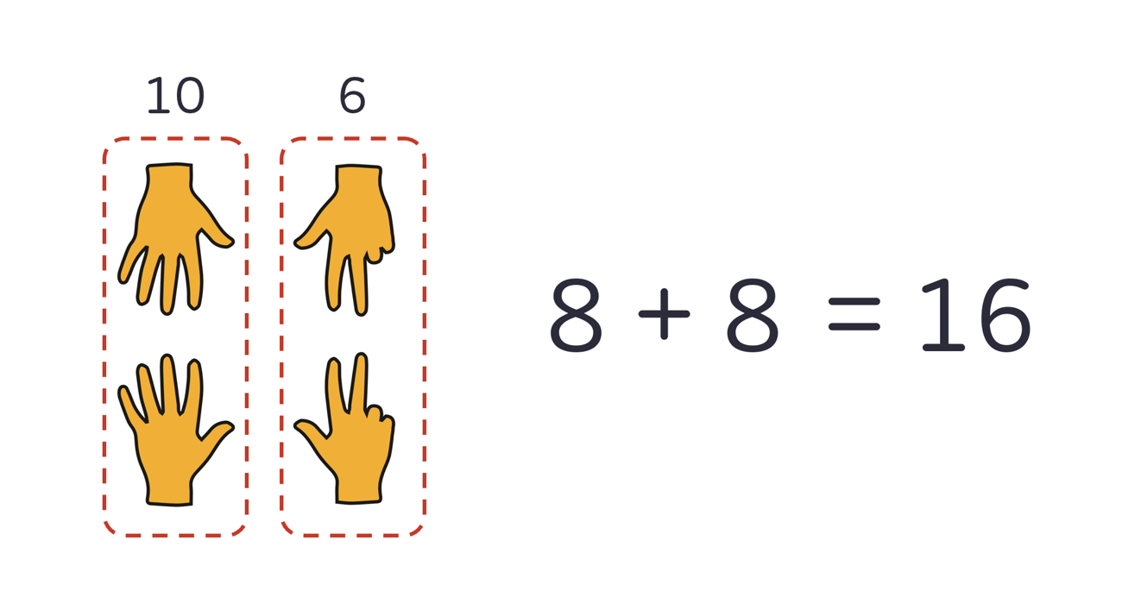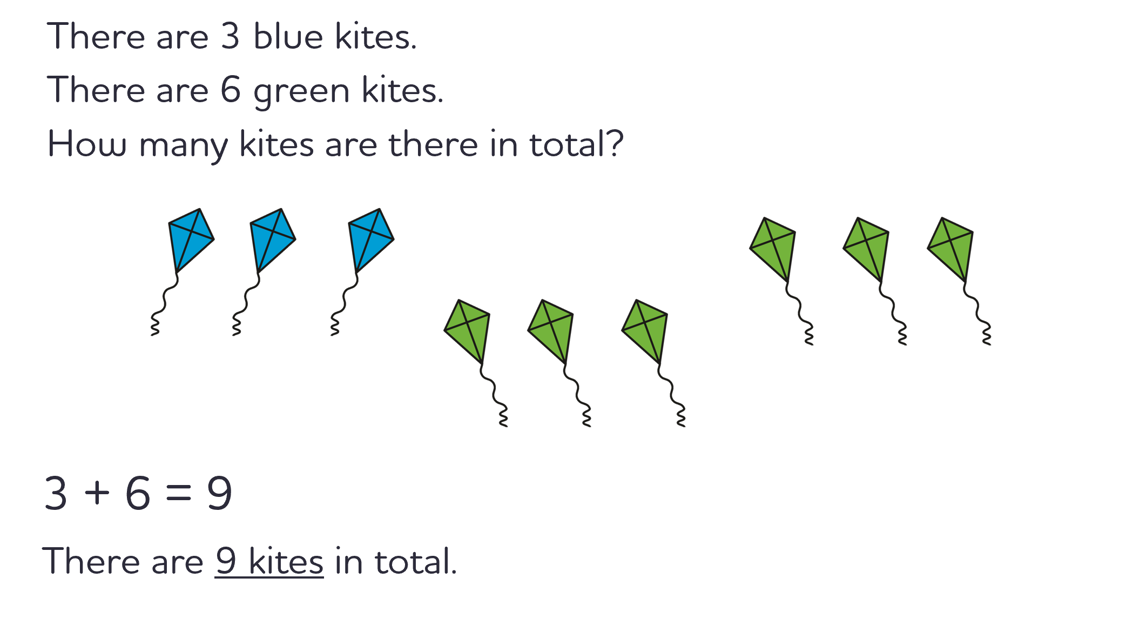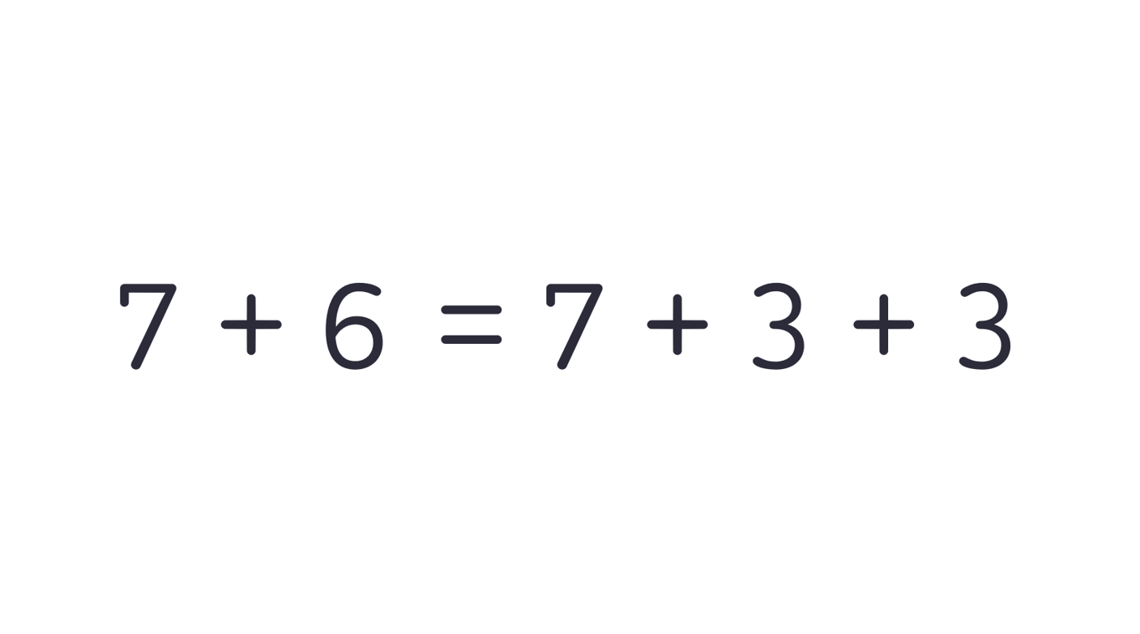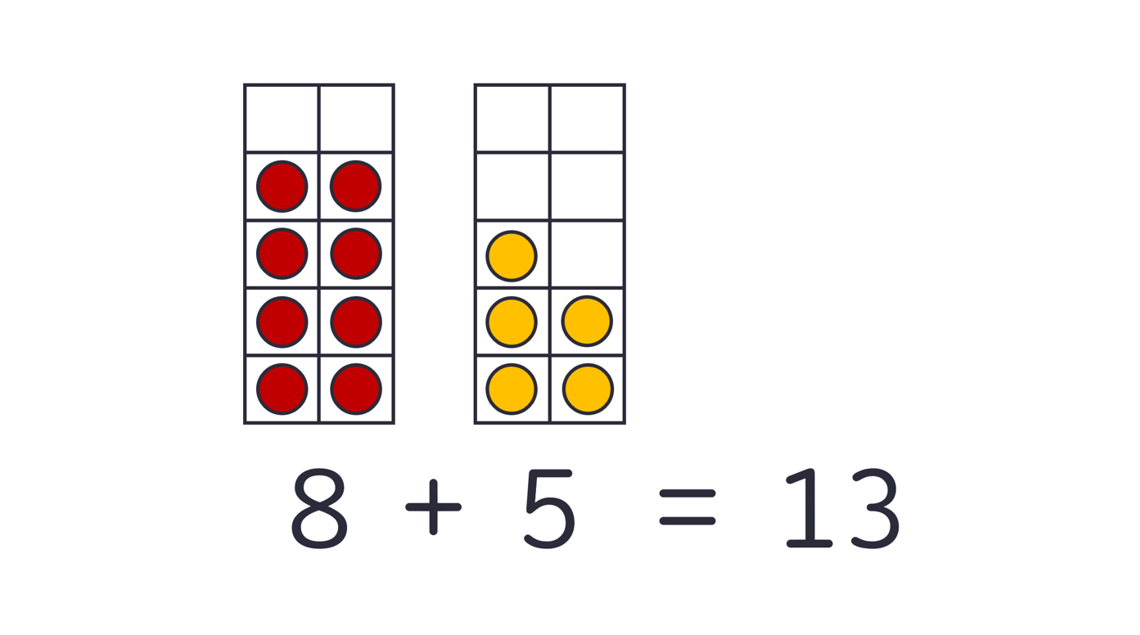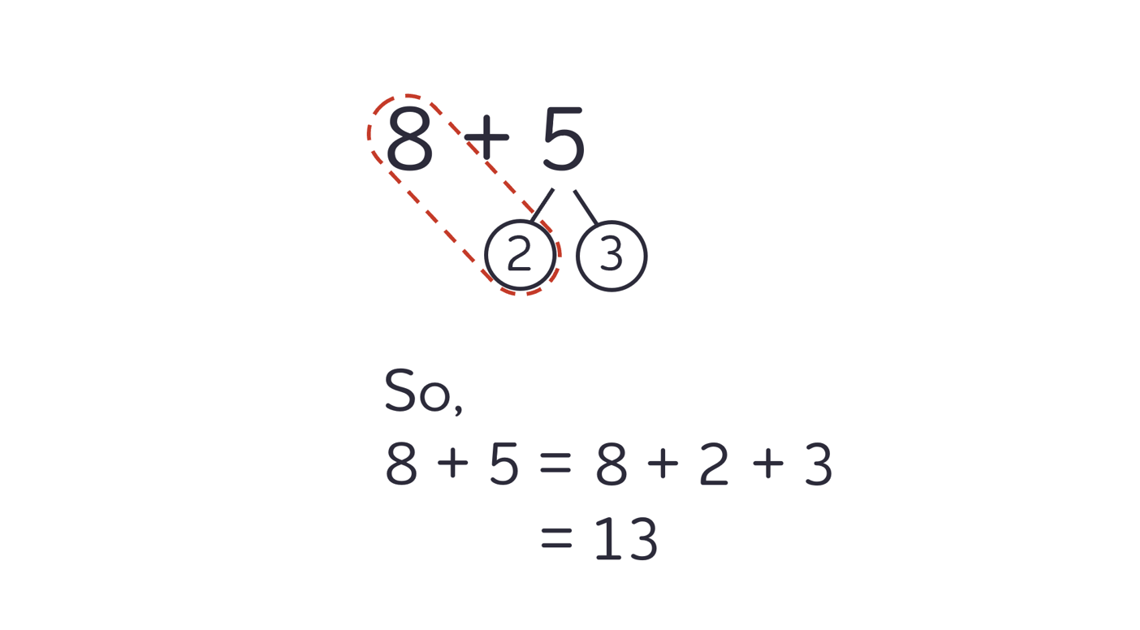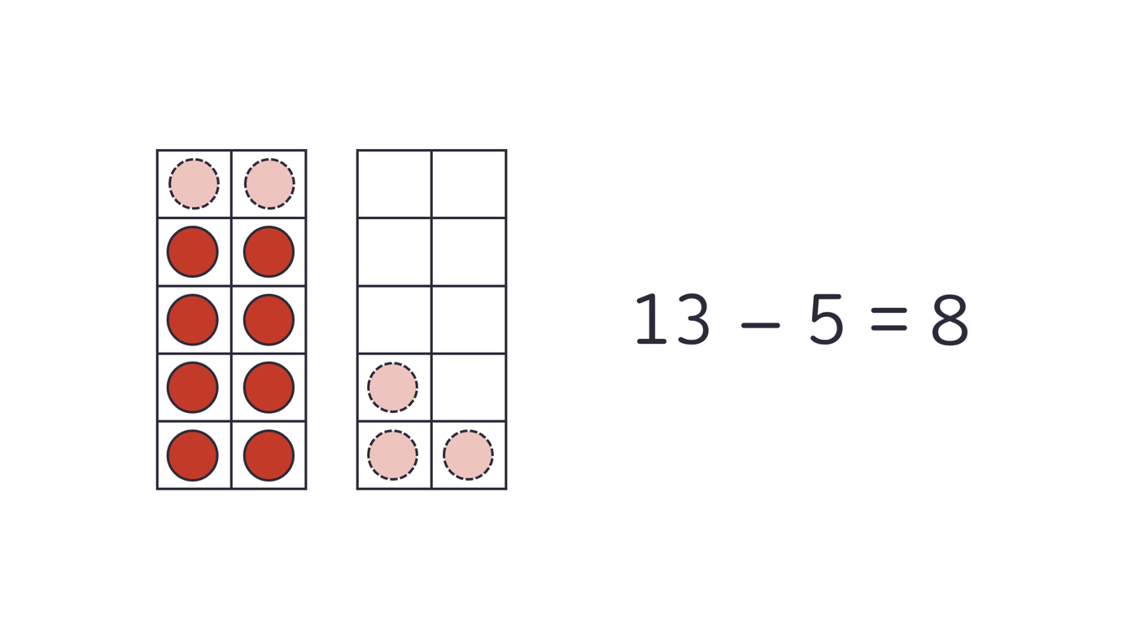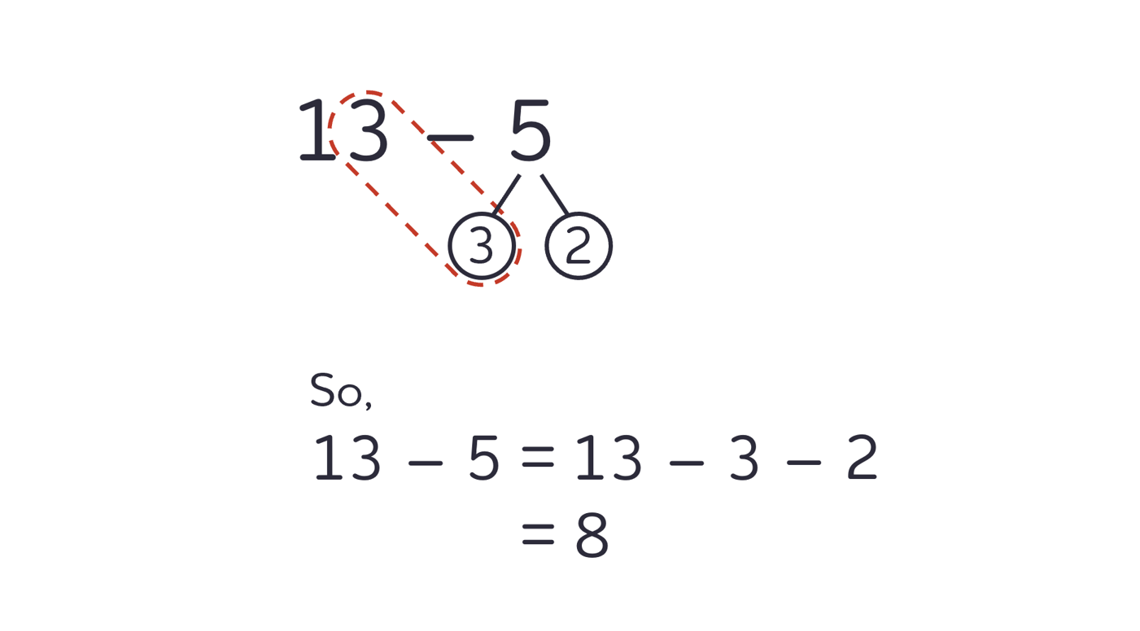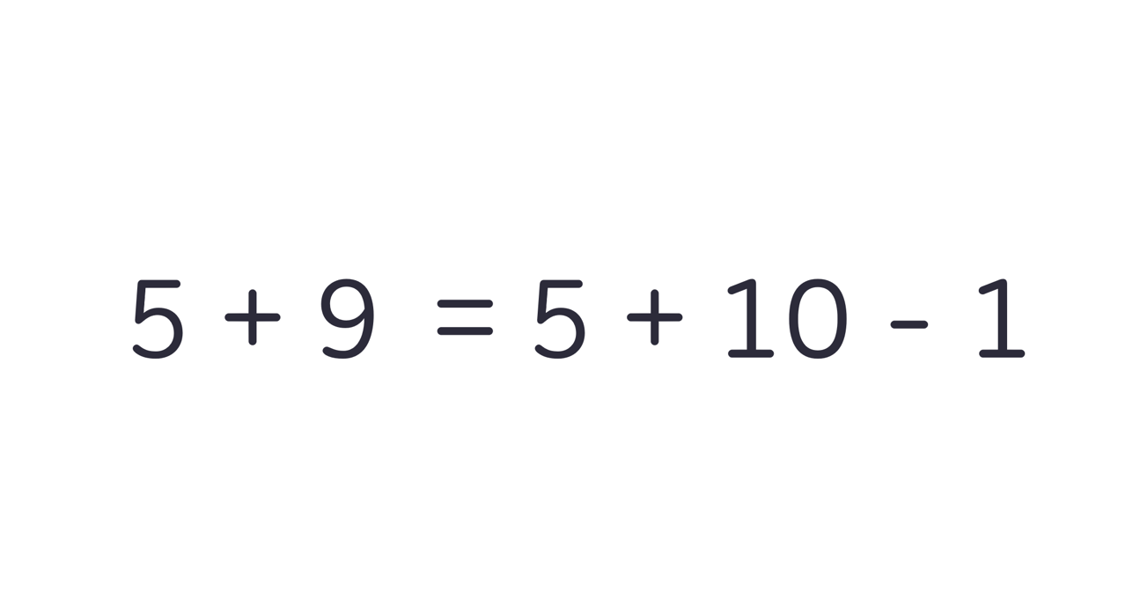Home Learning Zone
Welcome to the Home Learning Zone. Here you will find animations that explain the key visual models used in Number Sense Maths, and animations that support the Number Sense Maths At Home workbooks. Watch them with your child to support their learning, and to gently check their progress. Pause the animations as you go to talk about what the animations show. You can change the speed by clicking on the settings cog in the bottom right corner of the animation as it plays.
Key Visual Models
Tens frames
Introduction to tens frames. Animation for parents with voiceover explaining how this visual model helps us to think about number and quantity without having to count, and why it is such a useful tool when learning number bonds and calculation strategies.
Part part wholes
Introduction to part part wholes. Animation for parents with voiceover explaining how this visual model helps us to represent ways of making and breaking numbers, how we can apply it to addition and subtraction, and how it supports the teaching of key calculation strategies.
Number and Quantity
Subitising 1 to 10
Dots, objects and hands
Images of between 1 and 10 items presented in succession. Watch with your child at the end of Workbook 1 Chapter 2, both to practise subitising and to gently check how well they have mastered this key skill. Ask them to shout out what they can see. Follow up with the flashcards to practise any images they cannot yet recognise quickly without counting.
Subitising 1 to 10
Tens frames
Images of between 1 and 10 counters on tens frames presented twos-wise and fives-wise in succession. Watch with your child at the end of Workbook 1 Chapter 3 to practice subitising and to gently check how well they have mastered this key skill. Ask them to shout out what they can see. Follow up with the flashcards to practise any images they cannot recognise quickly without counting.
Make and Break 4, 3, 2
Story questions that involve making and breaking the numbers 4, 3 and 2. Contains picture prompts to help children work out the missing part. Watch with your child at the end of Workbook 2 Chapter 2 to see how comfortable they are breaking 4,3 and 2 into all their constituent parts.
Make and Break 10
Story questions that involve making and breaking the number 10. Contains picture prompts to help children work out the missing part. Watch with your child at the end of Workbook 2 Chapter 3 to see how comfortable they are breaking 10 into all its constituent parts
Make and Break 7
Story questions that involve making and breaking the number 7. Contains picture prompts to help children work out the missing part. Watch with your child at the end of Workbook 2 Chapter 5 to see how comfortable they are breaking 7 into all its constituent parts.
Make and Break 8
Story questions that involve making and breaking the number 8. Contains picture prompts to help children work out the missing part. Watch with your child at the end of Workbook 2 Chapter 6 to see how comfortable they are breaking 8 into all its constituent parts.
Ten and A Bit
Subitising 11 to 20
Images of tens frames with place value tables showing how the quantities 11 to 20 link to the way they are they are written as numerals. Watch with your child at the end of Workbook 3 Chapter 1 to see if they have grasped subitising the numbers 11 to 20 on tens frames or if they need a bit more practice. Ask them to shout out what they can see. Followup with the flashcards to practise any images they cannot quickly recognise without counting.
Ten and A Bit
Solving related equations
Addition and subtraction equations involving Ten and A Bit numbers, presented in random order, without supporting visual models. Watch with your child at the end of Workbook 3 Chapter 2 to see if they have understood how the structure of the number means they can solve these equations quickly and without counting. Ask them to shout out the answer. Follow up if you need by revisiting exercises in the workbook and reviewing the equation flashcards little and often until they are fluent in these facts.
Key Number Facts
Number Bonds to 10 Stories
Story questions that involve applying number bonds to 10 to solve addition and subtraction equations. Watch with your child when they have completed the activities and exercises in Chapter 1 of Key Number Facts Workbook 1, both for further practice, and to check gently what they have mastered. Pause after each question to think about and discuss the answer together. Follow up with number bond to 10 flashcards (red equations) for any of the facts they cannot yet solve quickly and without counting.
Doubles to 10 Stories
Story questions that involve applying doubles to 10 to solve addition and subtraction equations. Watch with your child when they have completed the activities and exercises in Chapter 1 of Key Number Facts Workbook 2, both for further practice, and to check gently what they have mastered. Pause after each question to think about and discuss the answer together. Follow up with doubles to 10 flashcards (blue equations) for any doubles facts they cannot yet solve quickly and without counting.
Doubles to 20 Practice
10 animated equations involving doubles (and halves) of numbers 6 to 10, shown with the Hands model for visual support. Watch this with your child when they have completed the activities and exercises in Chapter 2 of Key Number Facts Workbook 2, both to practice solving the equations, and to check gently what your child has mastered. Follow up with the doubles to 20 flashcards (green equations) for the facts they cannot yet solve quickly and without counting.
Tricky Facts Stories
Story questions that involve applying tricky facts to solve addition and subtraction equations. Watch with your child when they have completed Key Number Facts Workbook 3, both for further practice, and to check gently what they have mastered. Pause after each question to think about and discuss the answer. Follow up with tricky fact flashcards (yellow equations) for any of the facts they cannot yet solve quickly without counting.
Calculation Strategies
Make 10 and Then
Explainer for Parents
Animation with voiceover for parents to watch on their own before starting Calculation Strategies Workbook 1 with their child. Explains visually how the Make 10 and Then strategy works for both addition and subtraction. Watch until you are really familiar with the approach and are ready to introduce the strategy to your child as directed by the workbook.
Make 10 and Then
Addition: Tens Frames
10 addition equations animated on tens frames to show how the Make 10 and Then approach works visually. Watch with your child as the first activity at the beginning of Calculation Strategies Workbook 1. Pause the animation to talk about what is going on. When they have an understanding of the approach, complete the remaining activities and Exercises 1 and 2 in Chapter 1.
Make 10 and Then
Addition: Jottings
10 addition equations animated with part part whole jottings to show the number being added broken into parts in order to simplify the equation. Watch this animation with your child before starting Exercise 3 in Chapter 1 of Calculation Strategies Workbook 1. Pause the animation to talk about what is going on: a difficult one step calculation becomes an easier two step calculation. Then complete the remaining practice exercises in Chapter 1.
Make 10 and Then
Subtraction: Tens Frames
10 subtraction equations animated on tens frames to show how the Make 10 and Then approach works visually. Watch with your child as the first activity at the beginning of Chapter 2 in Calculation Strategies Workbook 1. Pause the animation to talk about what is going on. When they have an understanding of the approach, complete the remaining activities and Exercises 1 and 2 in Chapter 2.
Make 10 and Then
Subtraction: Jottings
10 subtraction equations animated with part part whole jottings to show the number being subtracted broken into parts in order to simplify the equation. Watch this animation with your child before starting Exercise 3 in Chapter 2 of Calculation Strategies Workbook 1. Pause the animation to talk about what is going on: a difficult one step calculation becomes an easier two step calculation. Then complete the remaining exercises in Chapter 2.
Adjusting from 10
Explainer for parents
Animation with voiceover for parents to watch on their own before starting Calculation Strategies Workbook 3 with their child. Explains visually how the Adjusting from 10 strategy works for both addition and subtraction. Watch until you are really familiar with the approach and are ready to introduce the strategy to your child as directed by the workbook.

